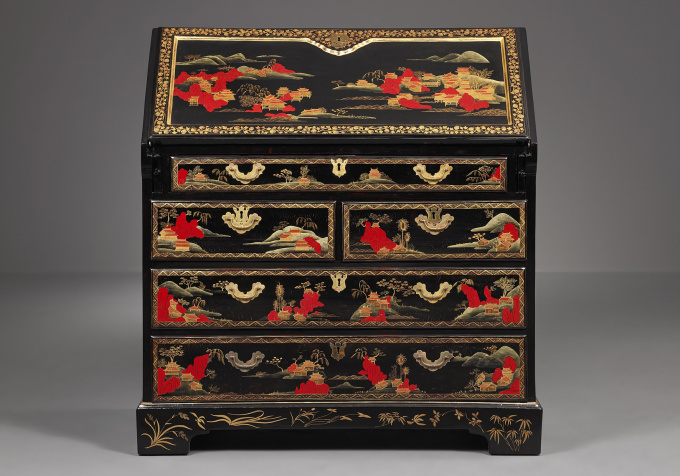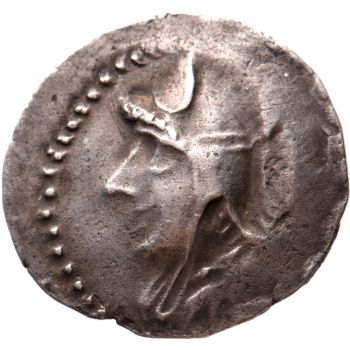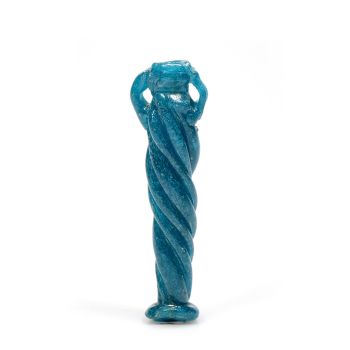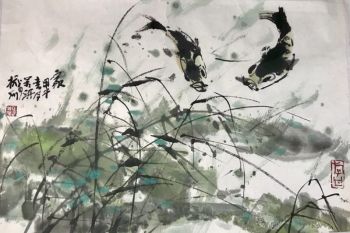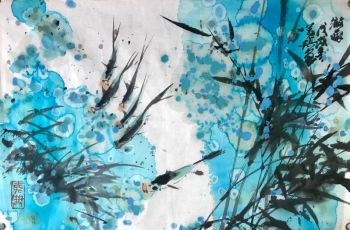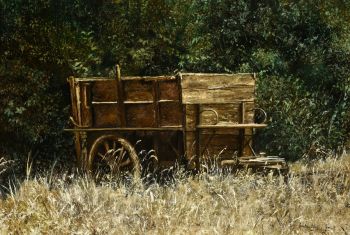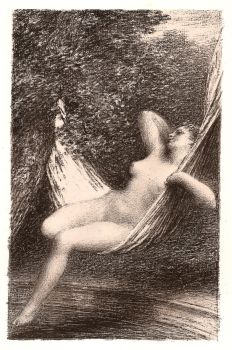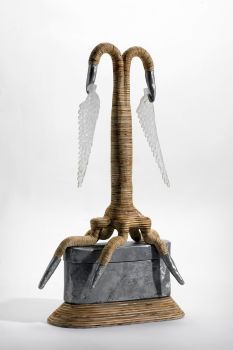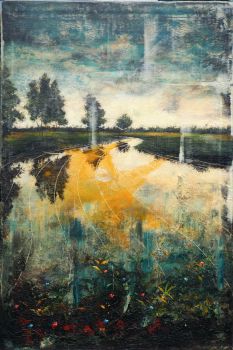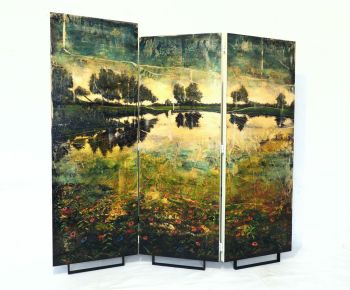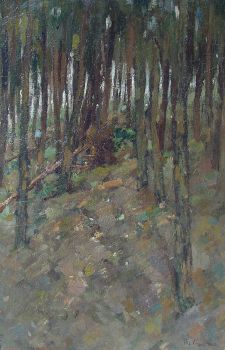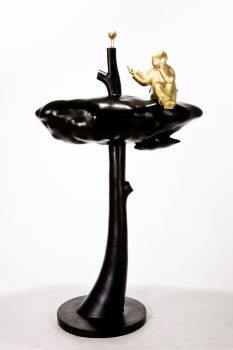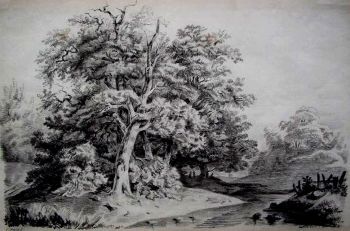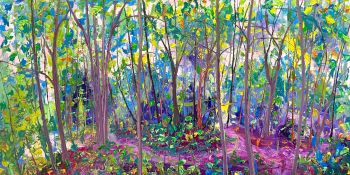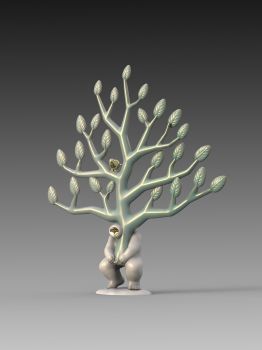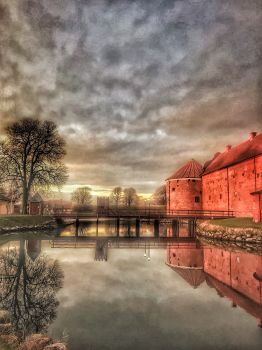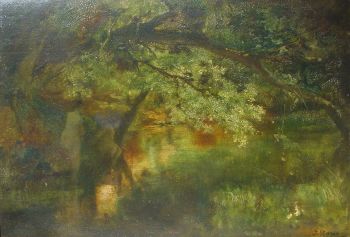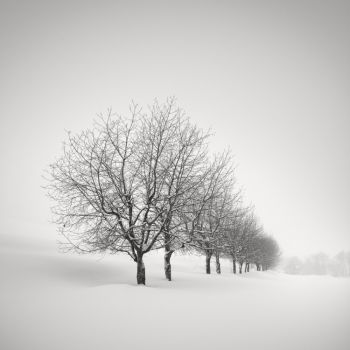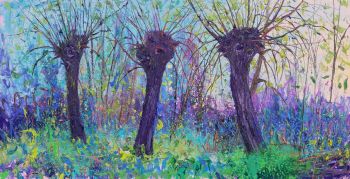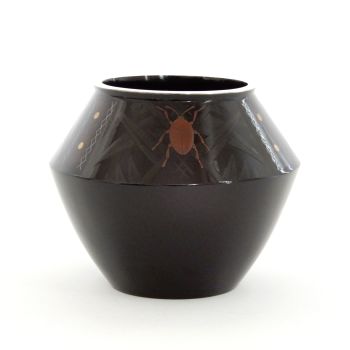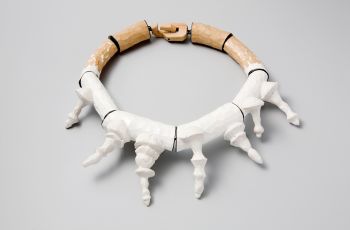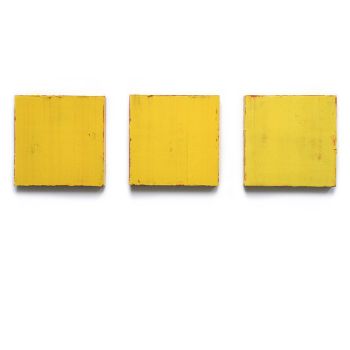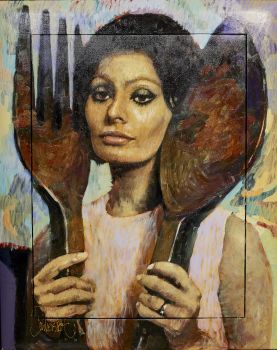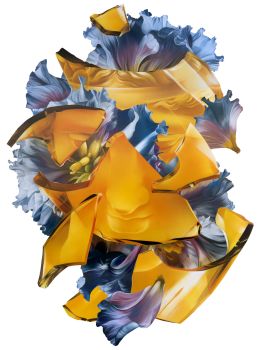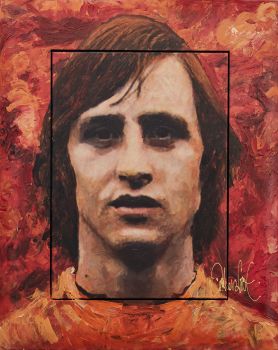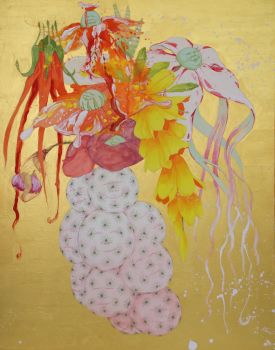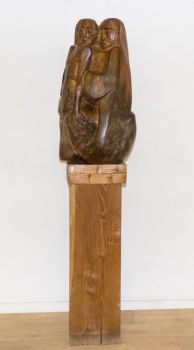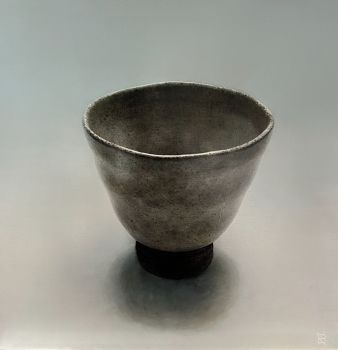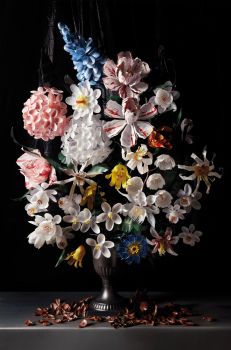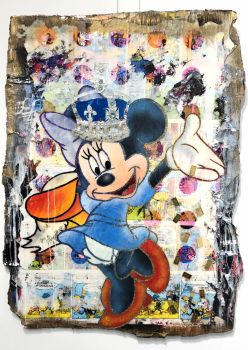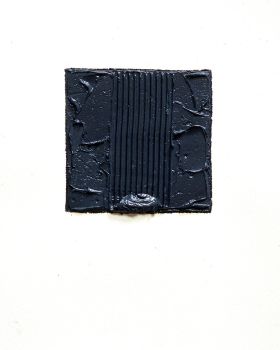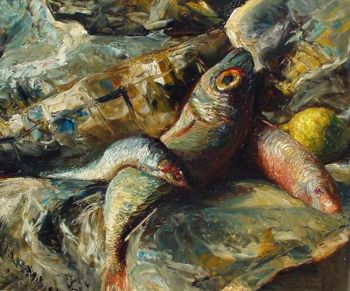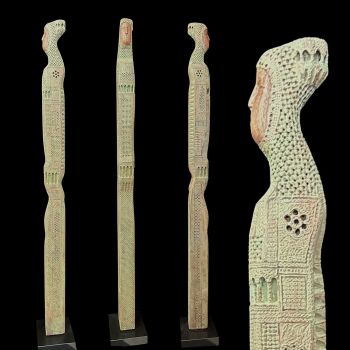Chinese Laquered Writing Desk made for the European Market 1740
Onbekende Kunstenaar
HoutChinese lakLak
107 ⨯ 100 ⨯ 61 cm
Momenteel niet beschikbaar via Gallerease
- Over kunstwerkA bureau or writing desk of Chinese lacquer presented here. It clearly is shaped after an English model of the same shape and dimensions, to be dated c. 1735-45. The lower part stands on a rectangular base, with four flat corner-feet, and is divided in four sections: below are two large drawers above each other, then there is a third section with two smaller drawers and on top a low drawer which is less wide. The upper part has a reclining fall-front which opens to function as a writing top, supported by two ledgers that can be pulled out. When lowered, it reveals a section with three reclining drawers on the left- and right-hand sides, separated by three compartments, each with a deep drawer below. These compartments are divided by two narrow panels, shaped as columns, that can be opened to the empty space behind. The top is flat; the drawers have shaped paktong handles.
The bureau is beautifully lacquered in shades of gold and partly with cinnabar red on a black lacquered ground. The five lower drawers, the outside of the fall-front, the flat top and the two sides show a river landscape with hills on the background, the rocky shores with houses, pavilions and trees. The large rock formations are detailed in low relief with cinnabar red lacquer, which gives the scenes a dramatic effect and certainly adds to the visual complexity of the landscapes.
The landscapes on the drawers are surrounded by narrow bands with a zig-zag pattern in gold; the fall front and the sides have bands with a continuing leaf- and flowerhead (or fruit) spray while the flat top has a narrow decorative band of a twisted cord.
The composing parts behind the fall front, the back of that flap and the three sides of the base are decorated with sprays of different plants and flowers, including bamboo, orchids, prunus and arrow-head, rendered as separate motifs in gold lacquer scattered over the surface.
The back of the bureau is lacquered black, without any decoration - it clearly was meant to be placed against the wall.
Apart from the fact that large pieces of Chinese lacquered furniture from this period are rare, the lacquered decoration of the bureau has some interesting features. First of all, the lavish use of cinnabar lacquer is very unusual, because this substance was expensive and was mostly used for smaller objects, mainly boxes or dishes for the domestic Chinese market. It is quite rare to see it on a piece of export lacquer.
Even more interesting are the stylistic features that are borrowed directly from decorations on Japanese lacquer, namely the zig-zag motif in the bordering bands of the lower drawers and the scattered flower motifs in gold. It is not difficult to point to many Japanese examples with such decorative motifs and therefore the question rises if this bureau is not only imitating an English model, but also tries to give a 'Japanese' impression. - Over kunstenaar
Het kan voorkomen dat een kunstenaar of maker onbekend is.
Voor sommige werken is het niet te bepalen door wie het gemaakt is of dat het is gemaakt door (een groep) ambachtslieden. Voorbeelden zijn beelden uit de Oudheid, meubels, spiegels of handtekeningen die vaak niet duidelijk of leesbaar zijn. Maar ook sommige werken zijn helemaal niet gesigneerd.
Ook kunt u de volgende beschrijving vinden:
•"Toegeschreven aan …." waarschijnlijk een werk van de kunstenaar maar niet zeker of gedeeltelijk
•“Atelier van ….” of werkplaats van” een werk uitgevoerd in het atelier of atelier van de kunstenaar, eventueel onder zijn toezicht
•“Cirkel van ….” een werk uit de periode van de kunstenaar die zijn invloed laat zien, nauw verbonden met de kunstenaar maar niet noodzakelijkerwijs zijn leerling
•“Stijl van ….” of “Volger van ….” een werk uitgevoerd in de stijl van de kunstenaar, maar niet noodzakelijk door een leerling; kan eigentijds of bijna eigentijds zijn
•“Wijze van ….” een werk in de stijl van de kunstenaar maar van latere datum
•"Na …." een kopie (van welke datum dan ook) van een werk van de kunstenaar
•“Getekend…”, “Gedateerd….” of “Ingeschreven” dan is het werk gesigneerd/ gedateerd/ ingeschreven door de kunstenaar. De toevoeging van een vraagteken duidt op een element van twijfel
•"Met handtekening ...", "Met datum ...", "Met opschrift..." of “Draagt signatuur/datum/opschrift” dan is de handtekening/datum/opschrift toegevoegd door iemand anders dan de kunstenaar
Artwork details
Related artworks
Onbekende Kunstenaar
A SMALL IVORY NETSUKE OF A DUTCHMAN WITH A DRUM1750 - 1800
Prijs op aanvraagZebregs & Röell - Fine Art - Antiques
Onbekende Kunstenaar
Twee studieportretten van Mas Marco Kartodikromo1900 - 1950
Prijs op aanvraagZebregs & Röell - Fine Art - Antiques
1 - 4 / 12- 1 - 4 / 6
Onbekende Kunstenaar
Japanese transition-style lacquer coffer 1640 - 1650
Prijs op aanvraagZebregs & Röell - Fine Art - Antiques
Onbekende Kunstenaar
EEN COLLECTIE VAN VIER SRI LANKAANSE IVOREN BIJBEL DOZEN18th century
Prijs op aanvraagZebregs & Röell - Fine Art - Antiques
Onbekende Kunstenaar
EEN VERGULD-ZILVER SRI LANKAANSE DOCUMENTEN ROLCONTAINER19th century
Prijs op aanvraagZebregs & Röell - Fine Art - Antiques
1 - 4 / 24- 1 - 4 / 24
Onbekende Kunstenaar
Japanese art deco lacquervase with Scarab beetle motif1920 - 1950
Prijs op aanvraagDille Art
Onbekende Kunstenaar
A rare Japanese export lacquer medical instrument box1650 - 1700
Prijs op aanvraagZebregs & Röell - Fine Art - Antiques
1 - 4 / 24

